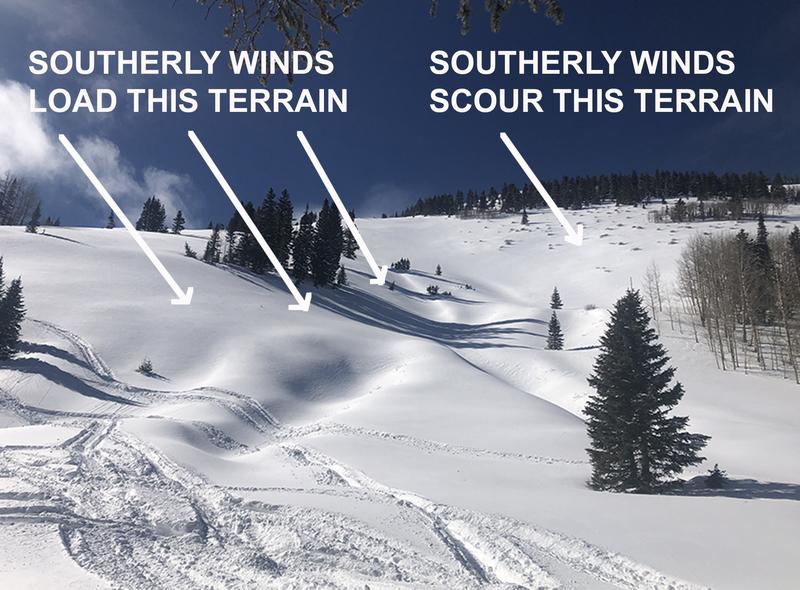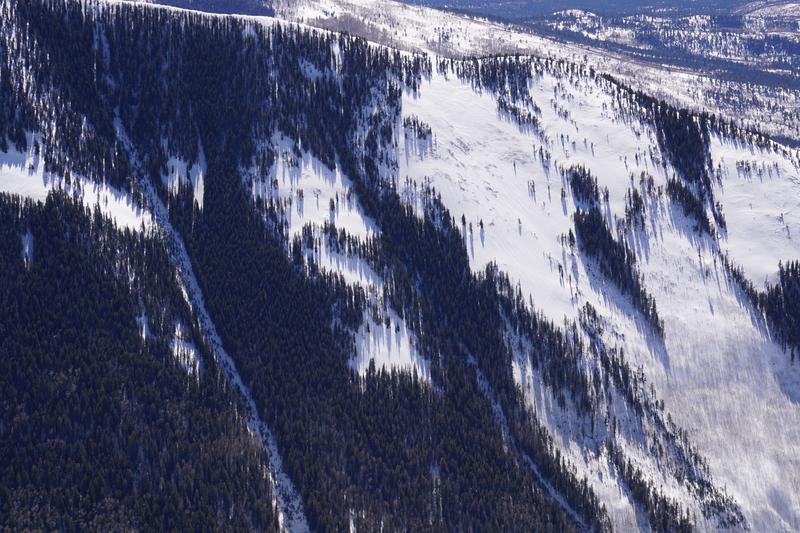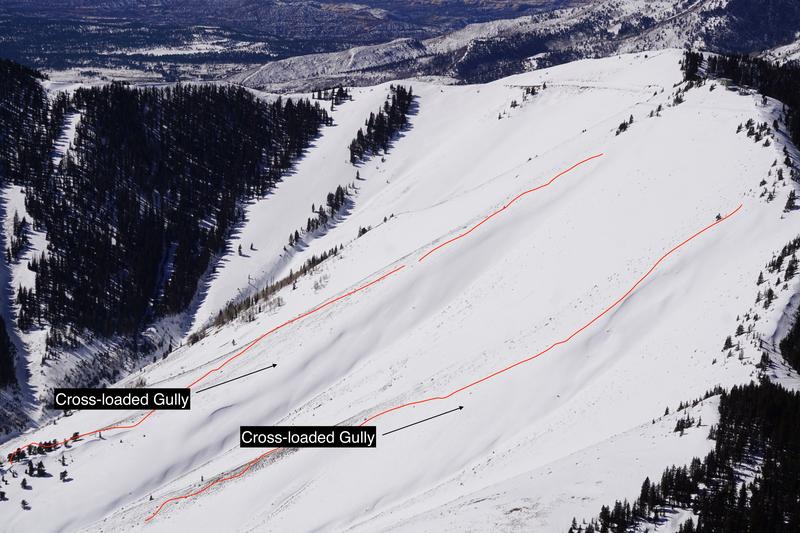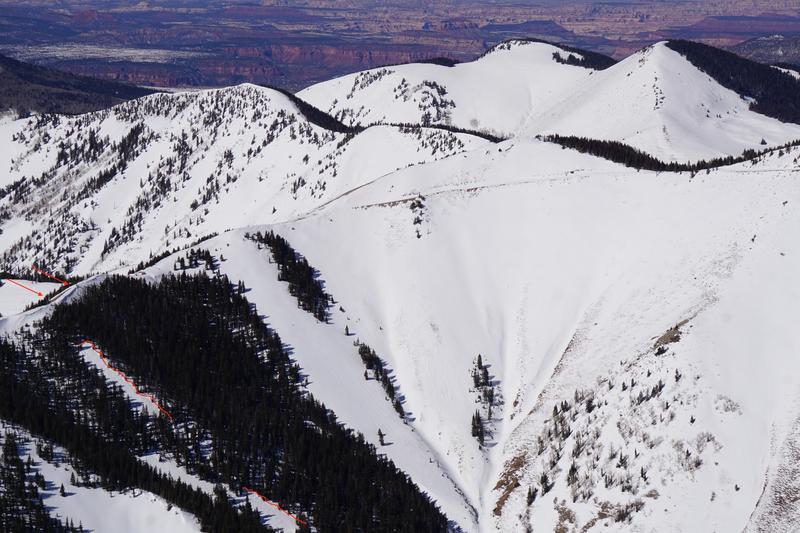Today it will be sunny. Highs 35 to 45 F. Southwest winds 15 to 25 mph in the afternoon. A low pressure trough entering the area this evening will bring light to moderate NW winds but no precipitation to our area. Another storm is on the horizon for the upcoming weekend, although snow totals look to be quite modest.
Snowpack Discussion
A relatively light freeze overnight and warm temperatures in the forecast today should have you on the lookout for wet loose avalanches on southerly aspects. We can expect to see small natural avalanches on east to south to west aspects where slopes are warming from intense solar radiation. Plenty of soft dry powder remains on sheltered, northerly aspects, but you still need to keep your slope angles under 30 degrees to avoid triggering an avalanche. Buried persistent weak layers of loose, sugary snow exist deep in the snowpack and storm snow from last week has added stress to these weak layers. Deposits of wind drifted snow have added further stress to the weak snowpack.
Photo below illustrates the type of terrain that should still be avoided. Slope is: 1) steep 2) subject to wind loading 3) northerly facing and therefore harboring layers of weak, sugary, faceted snow.
Under the current conditions, tickling slopes from below can cause avalanches to release from above.
Steep north-facing terrain is the most likely place you can still trigger a deep, persistent-slab avalanche. This is an aerial photo of a NW aspect of Jackson Ridge taken on 2/23/2021. You can see that snow depth is variable, and winds have drifted snow, creating dangerous slabs over buried weak layers.
On SE aspects like this terrain on Abajo Peak, ridgelines are shallow, while more easterly aspects have been cross-loaded by winds over the last few weeks.
Yesterday in the Abajo Mountains, I observed this avalanche on a NE aspect at 10,800' near Abajo Peak. This avalanche probably occurred sometime after Feb. 13th. Evidence of wind loading from the SW is visible in the left portion of the photo. With the current poor snowpack structure, this means many steep slopes are hanging in balance just waiting for a human trigger. Remember to avoid steep slopes with the same aspect, elevation, and configuration as recent avalanches.











